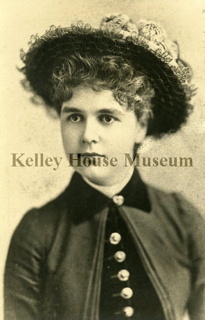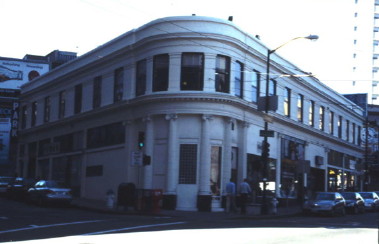Elise Drexler
 A prominent philanthropist and significant property owner in San Francisco during the early twentieth century, Elise A. Drexler is notable in San Francisco history for associations with the women's rights movement. She quietly undermined prescribed gender roles in San Francisco during the late-nineteenth and early-twentieth century. She worked outside the women's club system as a philanthropist, and as a property owner she supported burgeoning tenant businesses, including A. P. Giannini's Bank of Italy (later Bank of America). She was a property developer and capitalist and was a public figure during her highly publicized court case challenging the practice of restricting the sale of a woman's inherited real property based on a woman's potential or former potential to produce offspring.
A prominent philanthropist and significant property owner in San Francisco during the early twentieth century, Elise A. Drexler is notable in San Francisco history for associations with the women's rights movement. She quietly undermined prescribed gender roles in San Francisco during the late-nineteenth and early-twentieth century. She worked outside the women's club system as a philanthropist, and as a property owner she supported burgeoning tenant businesses, including A. P. Giannini's Bank of Italy (later Bank of America). She was a property developer and capitalist and was a public figure during her highly publicized court case challenging the practice of restricting the sale of a woman's inherited real property based on a woman's potential or former potential to produce offspring.
— lifted from a California State Parks landmark porfolio (Acrobat PDF, scroll down to page 16 for Colombo Building entry)
The Colombo Building is nominated under National Register Criteria B, for its intimate relationship to the biography of Elise A. Drexler (1866-1951), with a period of significance from 1913 to 1919, the year of construction to the year that Drexler dispensed with the property. A wealthy widow, prominent philanthropist, and significant property owner in San Francisco, Elise Drexler quietly undermined prescribed gender roles for women during the Progressive Era. As a philanthropist, she worked entirely outside the club system, which was highly unusual for a woman of her stature. As a property owner and landlady, she distinguished herself by helping to launch one of the most powerful banking corporations in the country, the Bank of America; she provided its first rental space in the building that used to stand on the Colombo property. Even more unusual was Drexler's foray into the world of large-scale property development following the earthquake and fires of 1906. A lawsuit related to three properties, including the property on which the Colombo Building stands, ultimately released Drexler from peculiar restrictions of her husband's will and, in the process, helped free women from the limitations of biological determinism. Before the State Supreme Court's 1916 decision, however, Drexler could not sell the disputed properties. Instead, in 1913, she commissioned master architects James and Merritt Reid to design the Colombo Building and a building for one of the other disputed properties. Whether or not the latter building was ever executed or if the third disputed property was developed is unclear; regardless, they gave way to the Embarcadero Center and no longer exist. The Colombo Building is the only surviving artifact in a defining moment of Elise Drexler's path towards independent womanhood, during this period of over all expansion in women's rights.
— appropriated from the 2007 National Register of Historic Places paperwork for the Colombo Building (Acrobat PDF, scroll down to page 10-20 for Statement of Significance)

Colombo Building (1913), 1-21 Columbus Avenue, San Francisco
Reid Brothers projects for Mrs. Drexler
as far as I know, these are Reid Brothers projects: Drexler Estate Bldg. (1908, 938-942 Market, now the Garfield), Drexler & Preston Estates Bldg. (1910, 117-129 Post St.), Colombo Bldg. (1913, 1-21 Columbus, pictured above), Drexler Estate Bldg. (1910[?] Front & Clay, razed, now Embarcadero Center)
![]()
send tips to editor@sf-now.com
 Reid Brothers, architects
Reid Brothers, architects